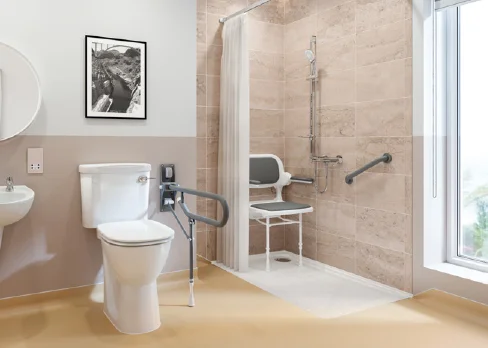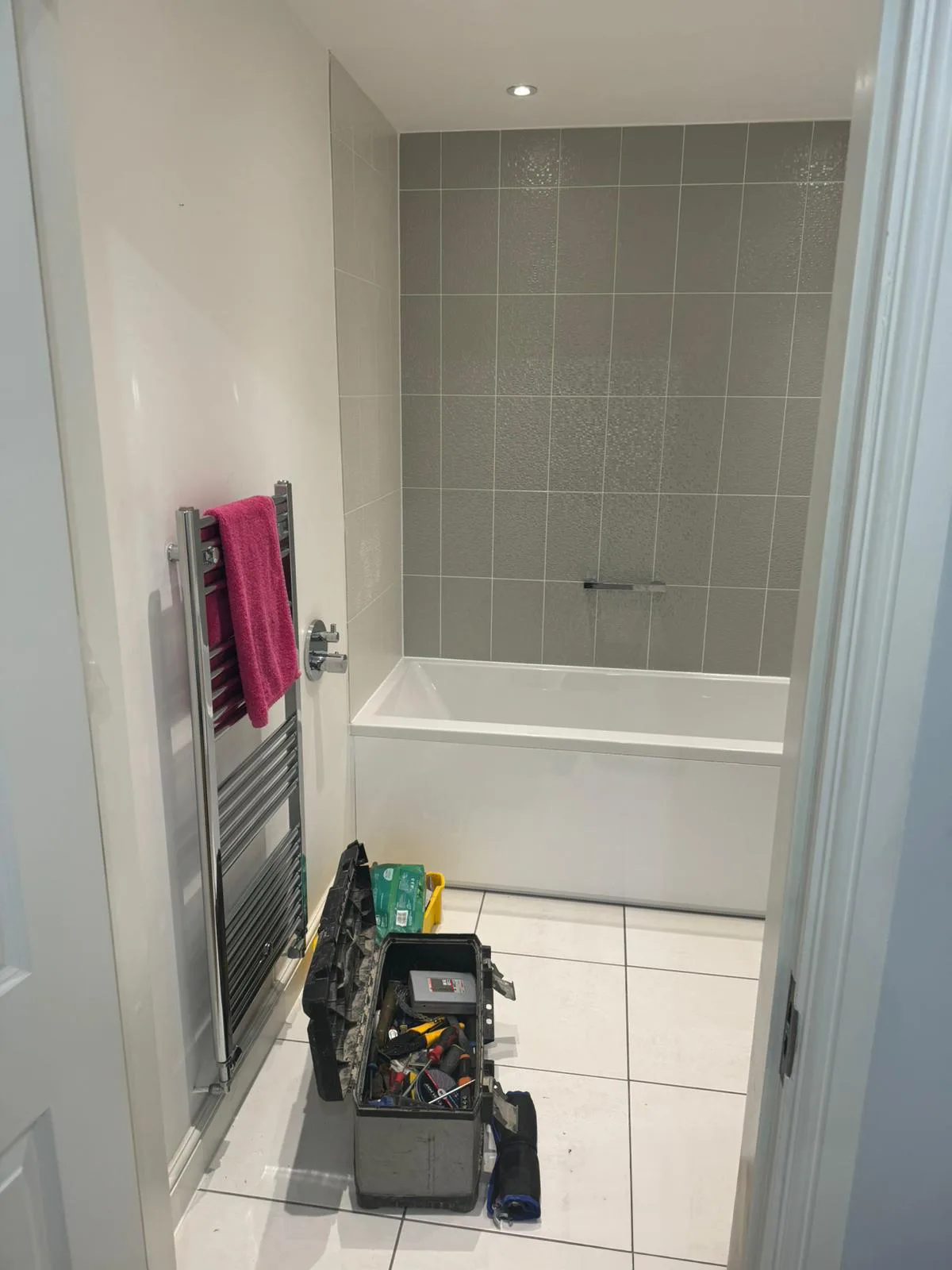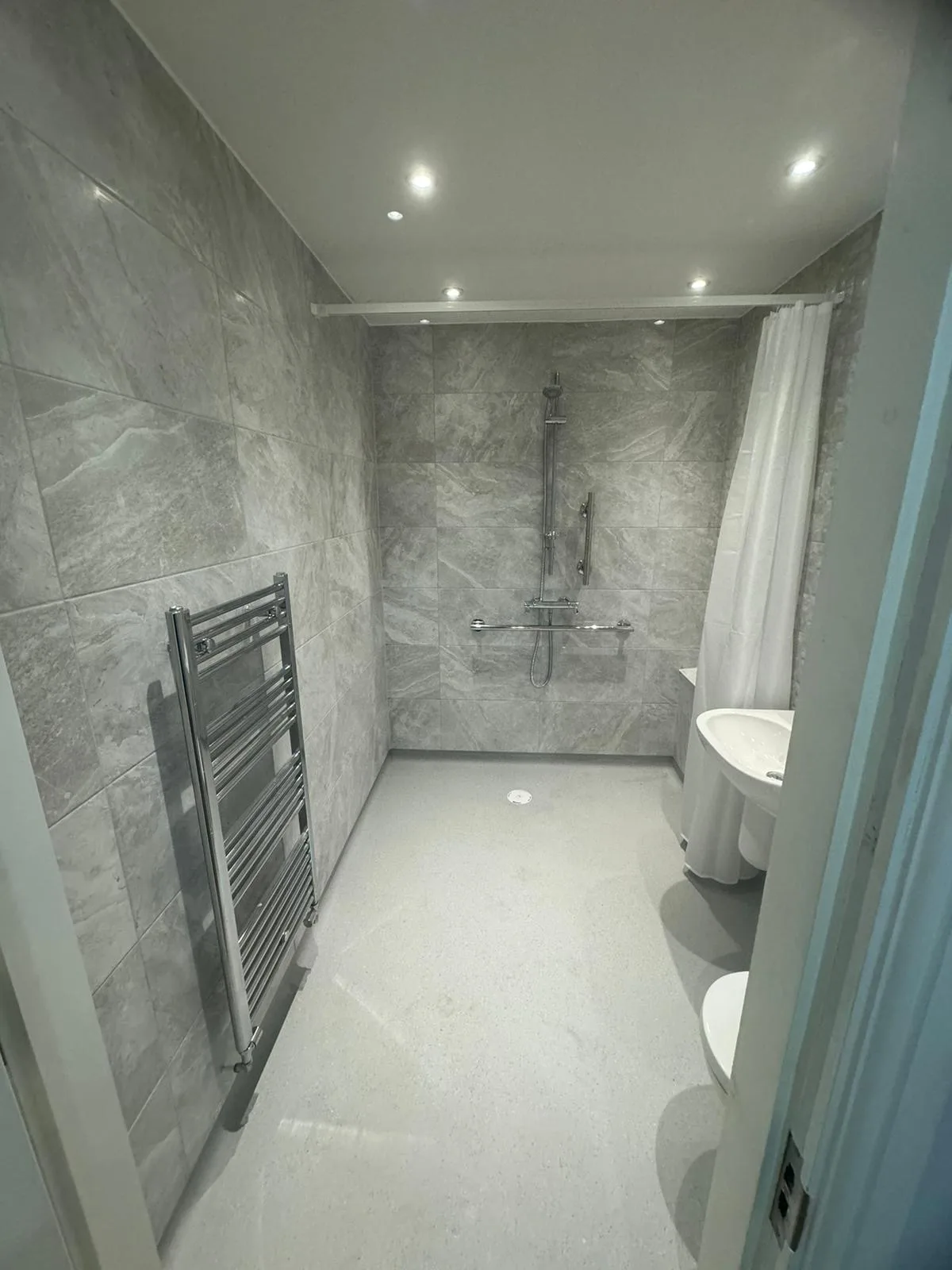Home » Bathing Advice » Buyers Guide » Walk-in Showers for Elderly: A Comprehensive Guide to Safety and Comfort
Walk in Showers for Elderly: The Ultimate Guide
As people age, they often face mobility issues, making it difficult for them to take showers safely and comfortably. Walk-in showers for elderly people can be a great solution to help them retain their independence while also ensuring their safety. In this article, we will explore everything you need to know about walk-in showers for elderly users.

What are Walk-in Showers for the Elderly?
Walk-in showers for the elderly are specially designed showers with a low threshold to allow easy access for people with limited mobility. Unlike traditional showers with high thresholds, these showers allow users to walk in without having to step over anything, reducing the risk of tripping or falling.
Why are Walk-in Showers Important?
As people age, they become more susceptible to injuries and accidents, particularly in the bathroom. Walk-in showers for the elderly provide a safe and convenient solution for seniors to take showers without risking their safety. By eliminating the need to step over high thresholds, seniors can avoid the risk of tripping or falling, which can be dangerous and even life-threatening.
Advantages of Walk-in Showers for Elderly People
There are several advantages of walk-in showers for the elderly, including:
1. Safety
Walk-in showers for the elderly are designed to be safe, with low thresholds and non-slip surfaces, reducing the risk of accidents and injuries.
2. Convenience
Walk-in showers are more convenient to use than traditional showers, as they do not require seniors to step over high thresholds or climb over the bathtub walls.
3. Comfort
Walk-in showers for the elderly offer greater comfort, with easy access and the ability to adjust the water temperature and flow to meet their specific needs.
4. Independence
With walk-in showers, seniors can retain their independence and privacy, as they can bathe without assistance from a caregiver or family member.
5. Hygiene
Walk-in showers for the elderly are easier to clean and maintain than traditional showers, reducing the risk of bacteria and mould growth.
Get Started With A Quick Conversation to Discuss Your Needs
Types of Walk-in Showers for the Elderly
There are several types of walk-in showers for the elderly, each with unique features and benefits. Some of the most popular types include:
1. Barrier-Free Showers
Barrier-free showers are designed with no threshold, allowing for easy access for seniors with limited mobility. These showers can be customized with a variety of features, including non-slip flooring, grab bars, and shower seats.
2. Roll-in Showers
Roll-in showers are designed with a ramp that allows seniors to roll in with their wheelchair or mobility device. These showers can be customized with a variety of features, including adjustable showerheads, non-slip flooring, and grab bars.
3. Low-Threshold Showers
Level access showers are designed with a threshold of fewer than two inches, allowing seniors to step in and out of the shower with ease. These showers can be customized with a variety of features, including grab bars, non-slip flooring, and built-in seats.
Factors to Consider When Choosing A Walk-in Shower
When choosing walk-in showers for an elderly user, there are several factors to consider, including:
1. Size and Layout
The size and layout of the bathroom will determine the type of walk-in shower that can be installed. It’s important to consider the available space, as well as the placement of the toilet, sink, and other fixtures. Your installer will assist you to pick the right size shower tray and complement it with slip resistant flooring.
2. Accessibility
The walk-in shower should be easily accessible for the elderly person, with a low threshold and grab bars to assist with balance and stability.
3. Safety Features
The walk-in shower should be equipped with safety features, such as non-slip flooring, grab bars, and shower seats to reduce the risk of accidents and injuries.
4. Water Management
The walk-in shower should be designed to prevent water from pooling on the floor and causing slips and falls. The showerhead should also be adjustable to allow the elderly person to control the water flow and temperature.
5. Budget
Walk-in showers for the elderly can vary in price depending on the type and features. It’s important to consider the budget when choosing a walk-in shower to ensure that it meets the elderly person’s needs without breaking the bank.
Our Latest Project
Our latest wetroom project, converting a traditional bathroom with a shower over the bath into a safe, accessible bathing environment for our customer.
The room was done to a high specification, including building out new stud walls, fully tiled room with tiles from Porcelanosa, a full length shower riser rail with grab handles and a pumped waste to ensure rapid removal of standing water.
A great project – completed in just under 10 days from start to finish.
If you are interested in a similar transformation – get in touch today for a no obligation conversation!


Frequently Asked Questions About Walk In Showers
The best type of walk-in shower for the elderly depends on the individual’s needs and bathroom layout. Low-threshold showers are a great option for those with limited mobility, while roll-in showers are ideal for those who use mobility devices like wheelchairs.
Yes, walk-in showers for the elderly can be customised with a variety of features, including non-slip flooring, grab bars, and shower seats, to suit the individual’s needs
Yes, walk-in showers for the elderly are easier to clean and maintain than traditional showers, as they have fewer nooks and crannies for bacteria and mould to grow.
The cost of walk-in showers for the elderly can vary depending on the type and features. It’s important to consider the budget when choosing a walk-in shower to ensure that it meets the elderly person’s needs without breaking the bank.
While it’s possible to install a walk-in shower yourself, it’s recommended to hire a professional to ensure that it’s installed safely and correctly.
Walk-in showers for the elderly should be equipped with safety features, such as non-slip flooring, grab bars, and shower seats, to reduce the risk of accidents and injuries.
Conclusion
Walk-in showers for the elderly can be a great solution to help seniors retain their independence while also ensuring their safety. With a variety of types and features to choose from, it’s important to consider the individual’s needs and budget when selecting a walk-in shower. By providing easy access, comfort, and safety, walk-in showers for the elderly can help improve the quality of life for seniors

